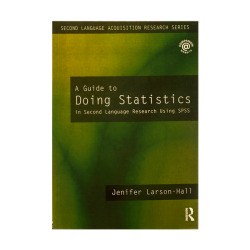23. Item response theory
23. Item response theory
Writer: Gary J. Ockey
Book: The Routledge Handbook of Language Testing
Saeed Mojarradi Ph.D. Candidate Thursday, May 10, 2018
Introduction/definitions
Item response theory (IRT) is an approach used to estimate how much of a latent trait an individual possesses.
The theory aims to link individuals’ observed performances to a location on an underlying continuum of the unobservable trait. Because the trait is unobservable, IRT is also referred to as latent trait theory—the literal meaning of “latent” is hidden.
An example of a latent trait is a test taker’s English reading ability.
The construct of reading ability is not observable, so measuring this ability requires observable performances designed to assess it. For instance, test takers could read short passages and then answer multiple-choice questions designed to measure their comprehension of the passages.
IRT can then be used to relate these observable performances, scores on the multiple-choice reading test items, to test takers’ underlying reading abilities. IRT can be used to link observable performances to various types of underlying traits. For instance, it can be used to connect individuals’ observed or self-reported anxiety about an assessment to their underlying levels of test anxiety.



